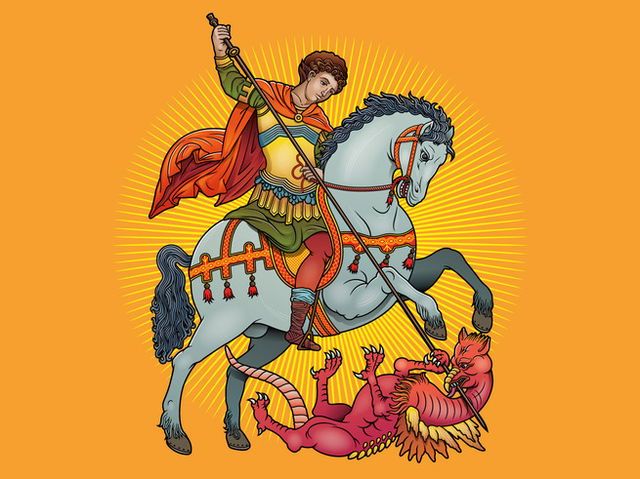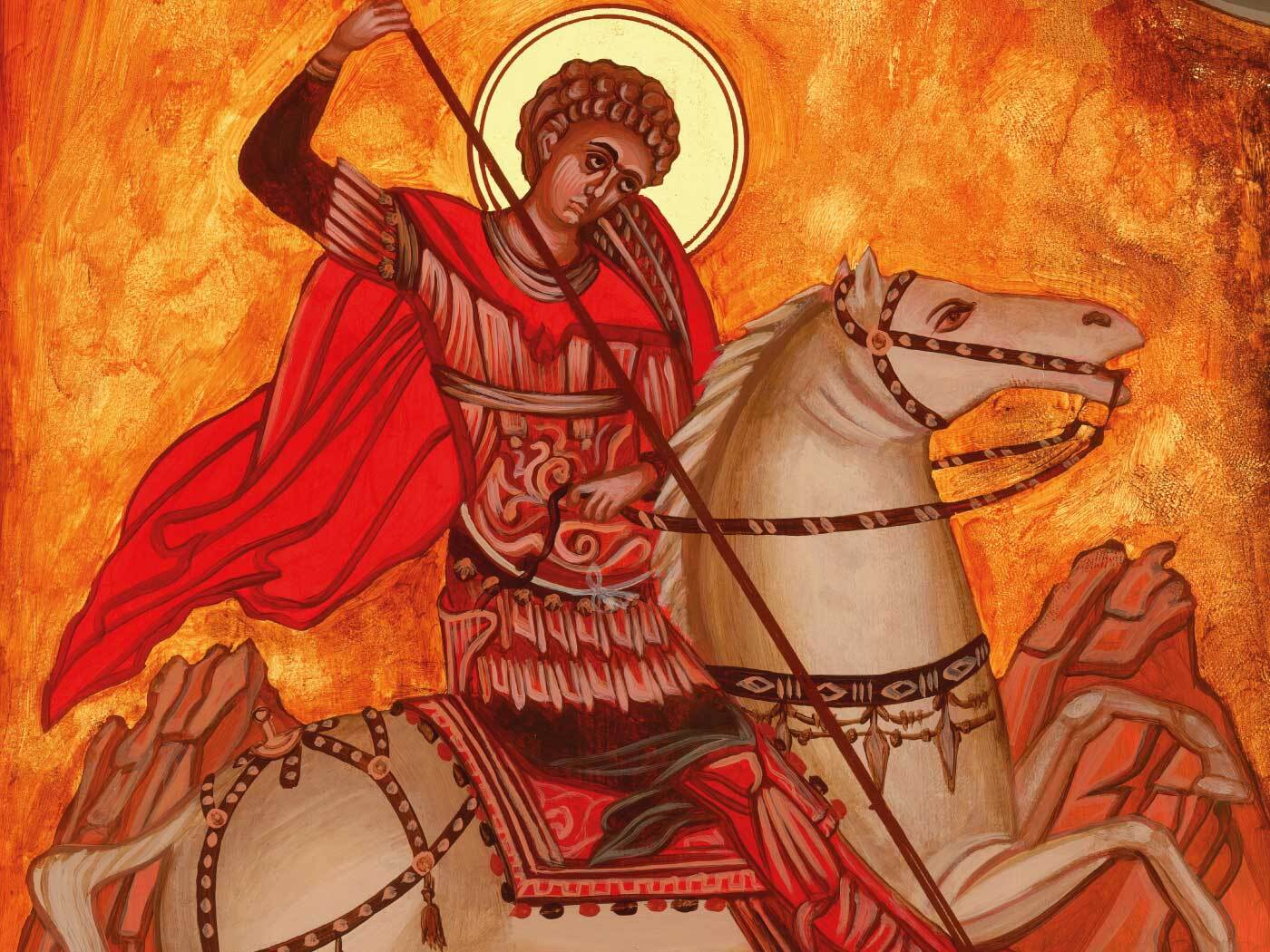- Calendar
- Calendar 2025
- April
- Saint George's Day
Saint George's Day
Observed annually on April 23rd, Saint George's Day honors Saint George, the revered patron saint of England. This day commemorates his legendary valor and the rich cultural heritage associated with his name.
Though little is known about his actual life, historical records suggest that Saint George was a Roman soldier born around 275–285 AD in Cappadocia (modern-day Turkey). He later served in the Roman army but was executed on April 23rd, 303 AD, for refusing to renounce his Christian faith during the persecution of Christians by Emperor Diocletian.

Historical Background of Saint George's Day
Saint George is best known for the legendary tale in which he slays a dragon to rescue a distressed princess.
The story, which originated in the Middle Ages, tells of a dragon terrorizing a town (often identified as Silene in Libya). The townspeople tried to keep the dragon at bay by offering it livestock, but when they ran out of animals, they were forced to sacrifice people, chosen by lottery. One day, the king’s daughter was selected, and as she was about to be offered to the dragon, Saint George arrived.
Seeing the terrified princess, George charged at the dragon on horseback and, after a fierce battle, wounded it with his spear. He then used the princess’s belt to tie the dragon up and led it back to the town, where he promised to kill it if the people converted to Christianity. After they agreed, George slayed the dragon, and the town was saved.
This narrative symbolizes the triumph of good over evil and has been integral to English folklore for centuries. The red cross on a white background, known as Saint George's Cross, serves as England's national flag and is a prominent emblem during the celebrations.
Saint George's Day Celebration
- Parades and Performances: Communities organize parades featuring participants dressed as Saint George, dragons, and other medieval characters. Street performances and reenactments of the dragon-slaying legend are common.
- Church Services: Special services are held, often including the hymn "Jerusalem," reflecting on England's spiritual heritage.
- Diverse Cultural Events: Festivals showcasing English music, dance, and cuisine foster national pride and community spirit.
- Educational Activities: Schools engage students with storytelling sessions, crafts, and lessons about Saint George's significance.
Global Observance
Saint George's Day is also celebrated in other countries, including Portugal, Georgia, and regions of Spain, each incorporating local traditions and interpretations. In Catalonia, for instance, the day is known as "La Diada de Sant Jordi," where it is customary to exchange books and roses.
Also known as Đ'urđevdan' in Serbia, it is celebrated on May 6th with morning picnics, music, and folk dances, marking the day as one of the most common family patron celebrations among Serbs.
Saint George's Day is a powerful tribute to courage, faith, and cultural heritage, celebrated in unique ways across the world. From England’s parades and church services to Catalonia’s book-and-rose tradition, each observance adds depth to his enduring legacy.
You might like to read these articles next:

Other Celebrations
-
Mar 01 Sat
-
Mar 17 Mon
-
Mar 19 Wed
-
Nov 02 Sun
-
Nov 11 Tue
-
Dec 06 Sat

Saint George's Day - Next years
Thursday, 23 April 2026
Friday, 23 April 2027
Sunday, 23 April 2028











